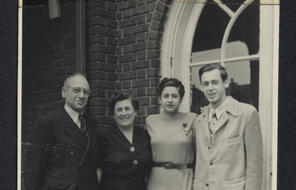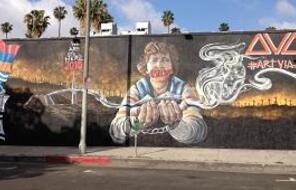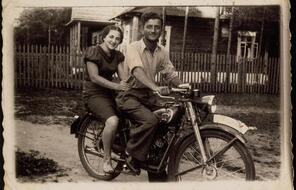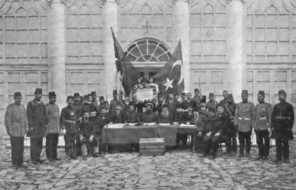Open-Source Participation
At a Glance
Language
English — USSubject
- Civics & Citizenship
- History
- Social Studies
- Human & Civil Rights
- The Holocaust
The widespread use of the internet and mobile phones has opened up new avenues for civic participation. With technology, individuals can respond to crises in creative ways that do not rely on governments, the media, or other institutions. This is what happened in Kenya in 2008, when a small group of bloggers and technology experts created a way for people to map the violence that erupted after a contested presidential election.
Violence related to elections was not new for Kenya. Political parties there are largely aligned with specific ethnic groups, and the supporters of whichever party is in power have often received advantages over the supporters of other parties. As one Kenyan put it, “When your group wins, you eat.”
Before the voting began in December 2007, opinion polls suggested that Raila Odinga and his Orange Democratic Movement (ODM) had a substantial lead over then president Mwai Kibaki and his Party of National Unity (PNU). While the actual voting went relatively smoothly and peacefully, the mood changed when the vote counting began. There were delays in announcing the results, and this caused frustration and suspicion among citizens—particularly among ODM supporters. Eventually, Kibaki was declared the winner, with about 200,000 more votes than Odinga. Violence erupted immediately after the announcement, especially in areas where a majority of people had supported Odinga and ODM. Odinga’s supporters charged that the vote had been rigged in favor of the incumbent Kibaki. Many people participated in the violence, and it spread quickly across the country. It lasted just over two months, and in that time more than 1,300 people were killed, thousands were badly injured, and more than 300,000 were forced from their homes. 1
As the violence was increasing, Ory Okolloh, a Kenyan lawyer and activist, was using her blog to try to make sense of the conflict that was ripping her country apart. Online, she shared her personal reactions and opinions as well as whatever information she could obtain about what was happening in Kenya. Hoping to find a way to gather reliable reports of violent incidents across the country, she posted a question on January 3: “Any techies out there willing to do a mashup of where the violence and destruction is occurring using Google Maps?”
Six days later, Ushahidi.com was born. Ushahidi means “testimony” in Swahili. The website allowed Kenyans to mark on a map where incidents of violence and where attempts to restore peace were occurring, based on reports submitted on computers and mobile phones. There were more than 45,000 internet users in Kenya, which meant that large numbers of people could see where violence was taking place and could better respond to what was happening.
Okolloh announced the launch of Ushahidi on her blog on January 9, 2008:
We believe that the number of deaths being reported by the government, police, and media is grossly under reported. We also don't think we have a true picture of what is really going on—reports that all of us have heard from family and friends in affected areas suggests that things are much worse than what we have heard in the media.
We also (in my idealist world) hope that we can begin to put names and faces to the people who have lost their lives in this mess.
What's the point of all this you might ask? Well, Kenyans have demonstrated their capacity for selective amnesia time and time again. When this crisis comes to an end we don't want what happened to be swept under the rug in the name of "moving forward"—for us to truly move forward, the truth of what happened needs to be told—Ushahidi (www.ushahidi.com) is our small way of contributing to that. 2
The information that Ushahidi collected proved to be more reliable and more comprehensive than information reported by either the Kenyan government or the press. Also, the data gathered by Ushahidi helped in the rescue of many Kenyans who were trapped in dire circumstances. Forbes magazine reported on one such rescue:
A ranger in Bogoria (northeast of Nairobi), William Kimosop, was driving to check on a remote outpost one evening in January when he stumbled across several hundred women, old people and children, lost in a ravine as they fled their villages where the men were still fighting. Four babies were born in that ravine, and supplies were running out. There were no government officials or police around. He sent a text message to a friend in Nairobi, asking her to get help from aid agencies. The friend forwarded his plea to a few people, after which it got picked up by Ushahidi and within six days a Red Cross truck reached him. 3
With former United Nations Secretary-General Kofi Annan serving as a mediator, the two political parties negotiated an agreement in February 2008 to share power in Kenya. As the negotiations progressed, individuals and organizations worked together to stop the violence between ordinary citizens. Ushahidi was part of this effort.
Because of Ushahidi’s success in Kenya, people in other countries began to use the platform. Since 2008, it has become a tool used by citizens around the world to report critical events in moments of crisis and to map when and where they are happening. Newsweek magazine described the importance of Ushahidi in rescue efforts after a devastating earthquake struck Haiti in 2010:
Ushahidi-Haiti was set up two hours after the Jan. 12 earthquake by volunteers based at Tufts University. Soon after, a short code (4636) was created for incoming text messages and spread via local and national radio stations. Witnesses could text information about what they were seeing or experiencing. If the message was actionable, e.g.: "there are people trapped in a building located on Border and Smith," then a volunteer would map the GPS coordinates and provide the information to rescue teams on the ground. Often the text messages were in Creole, but Ushahidi worked with some 10,000 Haitian-American volunteers across the United States who translated every text message within 10 minutes. Carol Waters, Ushahidi-Haiti's director of communications and partnerships, says that many of those messages were simply, "I'm buried under the rubble, but I'm still alive." By day 25 of the earthquake aftermath, Ushahidi-Haiti had mapped about 2,500 reports. In a recent e-mail, a member of the Marine Corps who worked on the Haiti rescue effort wrote, "I cannot overemphasize to you what the work of the Ushahidi/Haiti has provided. It is saving lives every day . . . You are making the biggest difference of anything I have seen out there in the open source world." 4
Ushahidi has been used all over the world, including in Egypt, Chile, Liberia, Somalia, and the United States.
Connection Questions
- What does Ushahidi do? Why do you think Ushahidi has been so powerful?
- How is learning about important events through social media different from learning about them from the news or from government reports? In what circumstances should we consider each source reliable? When might each be unreliable?
- How does Ushahidi depend on the desire of people to "choose to participate" in their communities?
- How can social media and internet technology help us help each other? When can social media or the internet be dangerous or destructive?
- 1Adapted from Karen Murphy, Dylan Wray, and Clara Ramírez-Barat, Learning from Our Past: An Exploration of Truth, Justice, and Reconciliation in Kenya (Nairobi, Kenya: International Center for Transitional Justice, 2015), 27.
- 2Ory Okolloh, "Ushahidi.com," Kenyan Pundit (blog), entry posted January 9, 2008, accessed October 28, 2015.
- 3Megha Bahree, "Citizen Voices," Forbes, last modified November 29, 2008, accessed October 28, 2015.
- 4Jessica Ramirez, "'Ushahidi' Technology Saves Lives in Haiti and Chile," Newsweek, last modified March 3, 2010, accessed October 28, 2015.
How to Cite This Reading
Facing History & Ourselves, "Open-Source Participation," last updated August 2, 2016.













